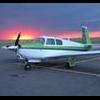landing speeds and flap settings?
-
Members Online
- Slick Nick
- ajudson
- Fly Boomer
- EricJ
- Lax291
- Dgeyer
- Rogerg
- raymondscott0321
- midlifeflyer
- laytonl
- Echo
- CWM20f
- 47U
- Tmooney
- N204TA
- Shadrach
- philiplane
- Utah20Gflyer
- takair
- N305EP
- Dieselman1220
- DonMuncy
- ericrynehess
- MikeOH
- ziggysanchez
- dzeleski
- Red Leader
- Zorro
- bigmo
- Hank
- 231MJ
- Crawfish
- ElkoRandy20J
- LDI
- Rmfriday
- sdmideas
- 1967 427
- RescueMunchkin
- bluehighwayflyer
- bixmooney
- PT20J
- BillyT0020
- Bondo


Recommended Posts
Join the conversation
You can post now and register later. If you have an account, sign in now to post with your account.